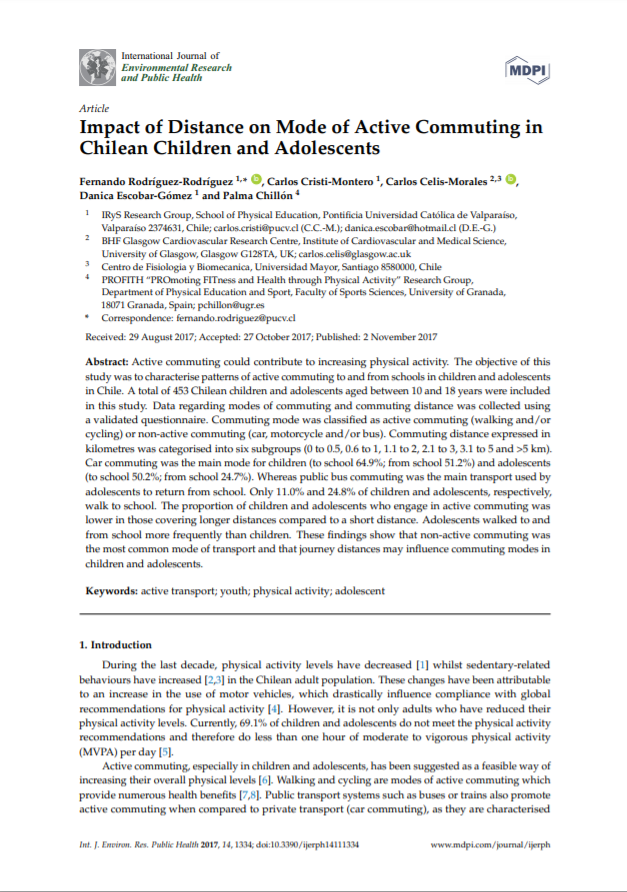Impact of distance on mode of active commuting in Chilean children and adolescents

Fecha
2017Autor
Rodríguez-Rodríguez F., Cristi-Montero C., Escobar-Gómez D., Chillón P.
Celis-Morales, Carlos [Centro de Fisiología y Biomecánica, Universidad Mayor, Chile]
Ubicación geográfica
Notas
HERRAMIENTAS
Acceda a títulos restringidos
¿Cómo descargar?Resumen
Active commuting could contribute to increasing physical activity. The objective of this study was to characterise patterns of active commuting to and from schools in children and adolescents in Chile. A total of 453 Chilean children and adolescents aged between 10 and 18 years were included in this study. Data regarding modes of commuting and commuting distance was collected using a validated questionnaire. Commuting mode was classified as active commuting (walking and/or cycling) or non-active commuting (car, motorcycle and/or bus). Commuting distance expressed in kilometres was categorised into six subgroups (0 to 0.5, 0.6 to 1, 1.1 to 2, 2.1 to 3, 3.1 to 5 and >5 km). Car commuting was the main mode for children (to school 64.9%; from school 51.2%) and adolescents (to school 50.2%; from school 24.7%). Whereas public bus commuting was the main transport used by adolescents to return from school. Only 11.0% and 24.8% of children and adolescents, respectively, walk to school. The proportion of children and adolescents who engage in active commuting was lower in those covering longer distances compared to a short distance. Adolescents walked to and from school more frequently than children. These findings show that non-active commuting was the most common mode of transport and that journey distances may influence commuting modes in children and adolescents.
URI
https://www.ncbi.nlm.nih.gov/pmc/articles/PMC5707973/pdf/ijerph-14-01334.pdfhttps://www.mdpi.com/1660-4601/14/11/1334
https://doi.org/10.3390/ijerph14111334
http://repositorio.umayor.cl/xmlui/handle/sibum/6936
Coleccion/es a la/s que pertenece:
Si usted es autor(a) de este documento y NO desea que su publicación tenga acceso público en este repositorio, por favor complete el formulario aquí.